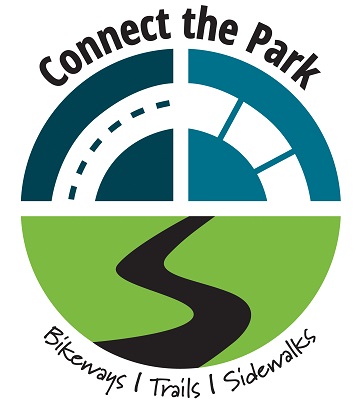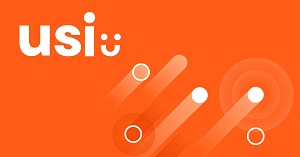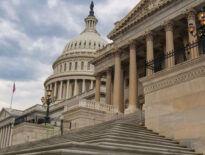St. Louis Park (pop. 49,000), a suburb west of Minneapolis, Minnesota, has demonstrated commitment and creativity in bringing broadband access to the region over the last two decades. They’ve done so by connecting community anchor institutions and school district buildings, in supporting ongoing infrastructure via a dig once policy, by working with developers to pre-wire buildings with gigabit-or-better-capable connections, and by using simple, easy-to-understand contracts to lease extra dark fiber to private Internet Service Providers (ISPs) to improve connectivity options for local residents.
Conversations about improving broadband in St. Louis Park began in the 1990s, when local government officials and the St. Louis Park School District began talking about replacing the aging copper infrastructure it was leasing from the cable and telephone companies with fiber to support educational use and municipal services. At the time the city was paying about $45,000/year to stay connected and online. A 2003 projection suggested it could invest $380,000 to build its own network instead, take ownership of its infrastructure, and see a full return on investment in less than a decade.
Fiber, both the city and the school district decided, offered the best path forward for the range of tools and bandwidth that would bring success. The school district led off in connecting its structures, but by 2004 both were done, with each contributing to joint maintenance and operational costs. The city thereafter decided to keep going and expand its infrastructure wherever it made the most sense. In 2006 it advanced this agenda by adopting a dig-once policy by adding conduit — and sometimes fiber — any time a street was slated for repairs.
Municipal Wi-Fi
St. Louis Park’s first foray into securing better connectivity for residents was a city-wide Wi-Fi project approved in December 2006. It began with a pilot project the previous April connecting 375 households across four neighborhoods which demonstrated strong demand from residents (21% signed up). Users also provided valuable feedback about the implementation obstacles that would need to be addressed, including a strong need for help desk support, aesthetic concerns about the installed hardware, high fees by pole-owner Xcel Energy, and line-of-sight challenges presented by the city’s buildings and dense foliage.
In transitioning citywide, St. Louis Park selected Maryland-based ARINC as a partner, partly because of the latter’s solution to solve the pole problem by using solar-powered routers which gave the city much more flexibility in terms of placement. St. Louis Park also did its best in addressing the other challenges, including co-locating the new hardware (490 access points in the end) on existing poles, on street signs, and at intersections, as well as painting the equipment brown to help it blend in. They also increased technical support.
Installation of Park Wi-Fi began the next summer across four phases, with the first users brought online in July 2007 and work complete by early fall. Three speed tiers were available (symmetrical 128 Kbps, 1 Mbps, and 3 Mbps for $15, $20, and $30/month) for residents, the latter two of which were also available to businesses. It cost a total of $1.7 million to get off the ground.
 Unfortunately for the city and users, as early as that winter problems persisted — primarily in terms of the speed and reliability of the resulting network. St. Louis Park found ARINC in default of their contract that December after it determined that only a small portion of the footprint delivered the agreed-upon specifications, and when six months of negotiations failed to produce a solution the city filed a lawsuit in Hennepin County in June 2008 to recover the $400,000 it had already paid and compel the company to remove the infrastructure that had been installed. The suit was settled that November, with the city winning $1.05 million and returning the equipment, though it would have to remove the poles itself. As part of the deal, St. Louis park retained ownership of the eight miles of fiber laid during the course of the project.
Unfortunately for the city and users, as early as that winter problems persisted — primarily in terms of the speed and reliability of the resulting network. St. Louis Park found ARINC in default of their contract that December after it determined that only a small portion of the footprint delivered the agreed-upon specifications, and when six months of negotiations failed to produce a solution the city filed a lawsuit in Hennepin County in June 2008 to recover the $400,000 it had already paid and compel the company to remove the infrastructure that had been installed. The suit was settled that November, with the city winning $1.05 million and returning the equipment, though it would have to remove the poles itself. As part of the deal, St. Louis park retained ownership of the eight miles of fiber laid during the course of the project.
What Chief Information Officer Clint Pires remembered most of the episode is that the city council stayed bullish on pursuing future projects to bring more competition to the area, and that determination was driven by local residents and businesses who wanted the same. He had this to say in a 2016 interview:
When you have a culture like that, it allows for these kinds of effort. I don’t think it’s about the technology itself, I think it’s about creating the culture that says, “We’re willing to take some risks for the sake of succeeding, with the idea of succeeding.” The idea that you won’t necessarily succeed every time but you’re moving the ball down the field and you’re thinking forward, you’re not thinking back.
Finding Other Paths
A 2012 study by CTC Energy and Technology lauded the city’s work in using its existing fiber for municipal use, and recommended further efforts be directed at making those assets available to Internet Service Providers (ISPs) to bring expanded high-quality options for residents at home.
Broadband remained near the top of priorities set by the city council for the period between 2015 and 2025 for both better residential access and economic development, with the city council indicating in planning documents that it wanted St. Louis Park to be a “technology connected community” moving forward. Between the city and the school district (as well as the earlier Wi-Fi project), it already had 50 miles of fiber available strung along roughly 45% of its 120 miles of streets. In 2016 Pires reaffirmed that “a community that is connected by a very robust and comprehensive broadband system will set itself apart and be better able to provide free economic growth, innovation and community development.”
The city continued to pursue additional conduit and fiber installation where available. In 2017 eight additional miles were laid, with additional disaster recovery plans and systems put in place for the future. A 2018 Capital Improvement Plan called for the issuance of $2.5 million in General Obligation Bonds over the next ten years to fund additional work, with another $700,000 to be reserved to a capital replacement fund for locates and asset management through 2027. It links these efforts to its Connect the Park initiative to add more trails, bikeways, and sidewalks to the city.
Partnerships Bring Competition and Flexibility
Minnesota cities are constrained by a preemption law which requires municipalities pass a 65% referendum to offer “local exchange services” – the meaning of that is unclear currently but is believed to refer to traditional telephone services. Another barrier limits the ability of local governments to “improve, construct, extend, and maintain facilities for Internet access and other communications purposes.” In the absence of that local authority, Saint Louis Park has been pursuing other options.
 Following the advice of the 2012 study, St. Louis Park has been actively pursuing partnerships with private providers to use its infrastructure to bring Fiber-to-the-Home (FTTH) options to residents and businesses in the area. In 2016 it signed an agreement with Arvig to lease excess dark fiber so the provider could expand service, which it has done over the last four years.
Following the advice of the 2012 study, St. Louis Park has been actively pursuing partnerships with private providers to use its infrastructure to bring Fiber-to-the-Home (FTTH) options to residents and businesses in the area. In 2016 it signed an agreement with Arvig to lease excess dark fiber so the provider could expand service, which it has done over the last four years.
In 2017 the city likewise partnered with Minnetonka-based USI Fiber (formerly US Internet) to do the same. This agreement included access to the city’s dark fiber so the company could begin a Fiber-to-the-Home (FTTH) build in the city. In return, St. Louis Park also got access to USI-owned fiber to provide redundant routes out of town. It has been a fruitful partnership, benefitting city and school buildings during updates, expansions, and remodeling, but businesses and households as well. In 2017 USI brought two business corridors online as well as multi-dwelling units (MDUs) totaling almost 800 households.
 The partnership also served as the basis for a 2018 expansion to single-family homes in St. Louis Park in the South Sorenson Neighborhood as well as two more apartment complexes. By the end of 2019, USI fiber service was available to 30 commercial buildings, 43 MDUs totaling more than 1,600 households, and enjoyed a take rate in Sorenson of around 25%. The company planned further investment down the road, with expansion into the Willow Park neighborhood, the acquisition of an office in the city, and 13 more MDUs.
The partnership also served as the basis for a 2018 expansion to single-family homes in St. Louis Park in the South Sorenson Neighborhood as well as two more apartment complexes. By the end of 2019, USI fiber service was available to 30 commercial buildings, 43 MDUs totaling more than 1,600 households, and enjoyed a take rate in Sorenson of around 25%. The company planned further investment down the road, with expansion into the Willow Park neighborhood, the acquisition of an office in the city, and 13 more MDUs.
A Successful Future Ahead
In 2019 the city released its 2040 Comprehensive Plan, which includes fiber for the future. It called for leveraging the city’s fiber to support municipal and school district connectivity while leasing additional capacity to private providers to continue the task of bringing households online and encouraging further economic development.
St. Louis Park’s focus on MDUs has been particularly fruitful since almost half of the city’s households were so organized. The city has, since at least 2014, been working with developers (both MDU and mixed-use commercial and residential construction) to encourage the installation of street-facing conduit and access points, in-building wiring closets, and at least two in-unit wall connections at a comparative low up-front cost to incent ISPs down the road to bring infrastructure right into the building.
In addition, the city continues to extend fiber to city infrastructure and local parks where able, both to support smart city applications (like remote locking and unlocking of restrooms) as well as free public Wi-Fi in those areas.
One of the best things government entities can do to facilitate public-private partnerships that make use of existing information infrastructure is keep contract language simple and short, and St. Louis Park has done just that. USI Fiber CEO Travis Carter remarked on his experience after expressing interest in expanding into the city from its Minneapolis footprint:
[The CIO’s office] had already done all the homework with the City Council. Had already got it all passed. They had a rate card no different than if you were to call us up and say, “I want fiber in Minneapolis. I can tell you here how much it is.” He operated just like a normal business to promote and utilize the services that the city paid for. He knew down to the fiber mile, he knew the routes, he knew the maps. He came out here. I’ve never seen anyone from a city act like a salesperson. [He said to us], “Here’s all the data. Here’s the price. How many do you want? I have them in stock right now. I can get them going for you.” It was amazing.
Carter summed up St. Louis Park’s success well:
They’re a classic example of a city doing it right. They’re really forward-thinking. They’re putting in extra conduit when they’re doing construction. They’re putting in extra fibers. They’re leasing fibers. They’re even encouraging apartment buildings and MDU’s and new construction to bring easy egress out to the right-of-way. These guys over there really got it figured out how to do it right to entice people to come to town.
This article was originally published on ILSR’s MuniNetworks.org. Read the original here.
For timely updates, follow Christopher Mitchell or MuniNetworks on Twitter and sign up to get the Community Broadband weekly update.
The original version of this article incorrectly characterized the municipal broadband barriers in Minnesota but has been corrected.
Header image by flickr user Tony Webster via Creative Commons Attribution 2.0 Generic.





